- Login
Critical Spatial Practice
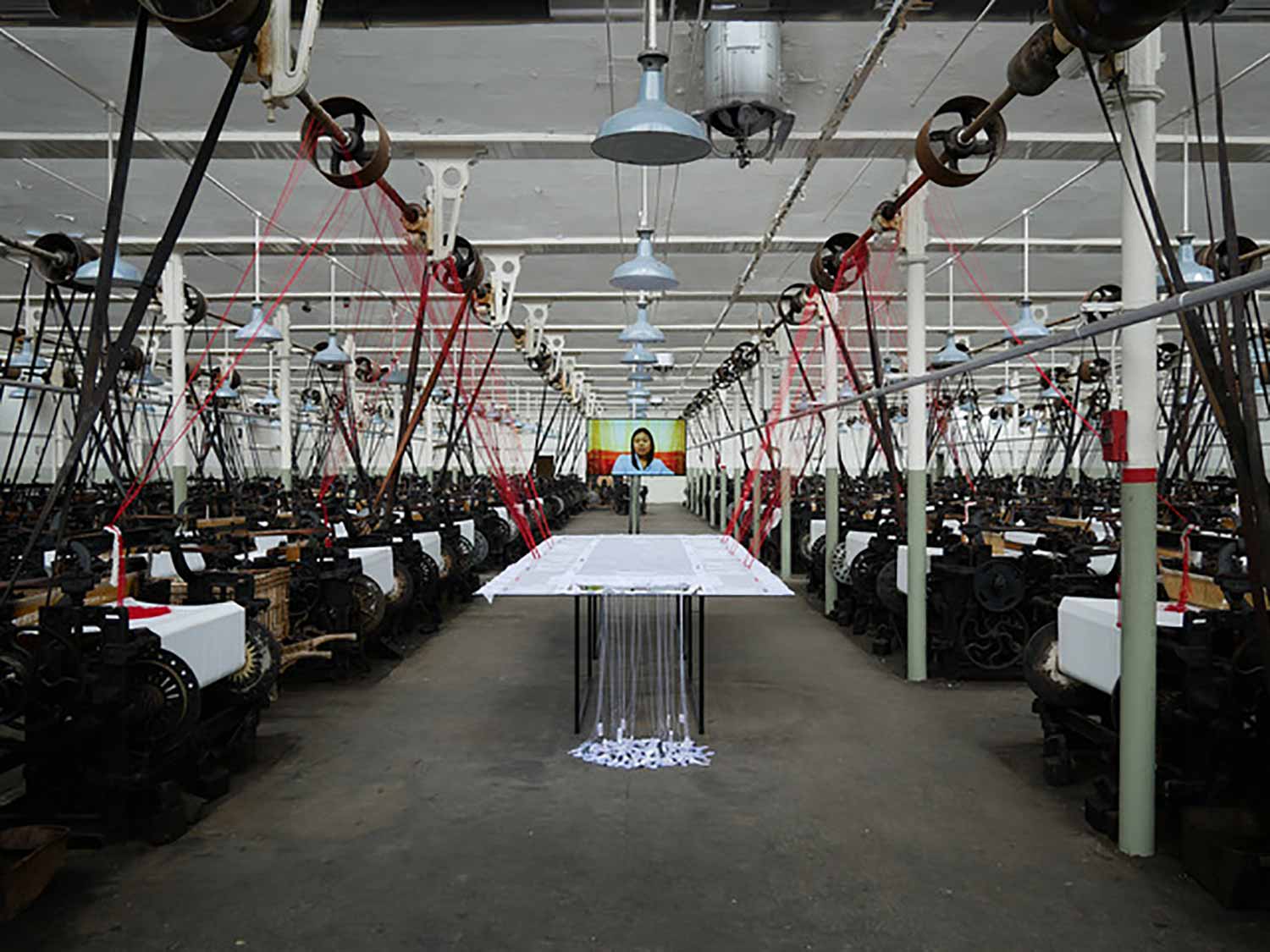
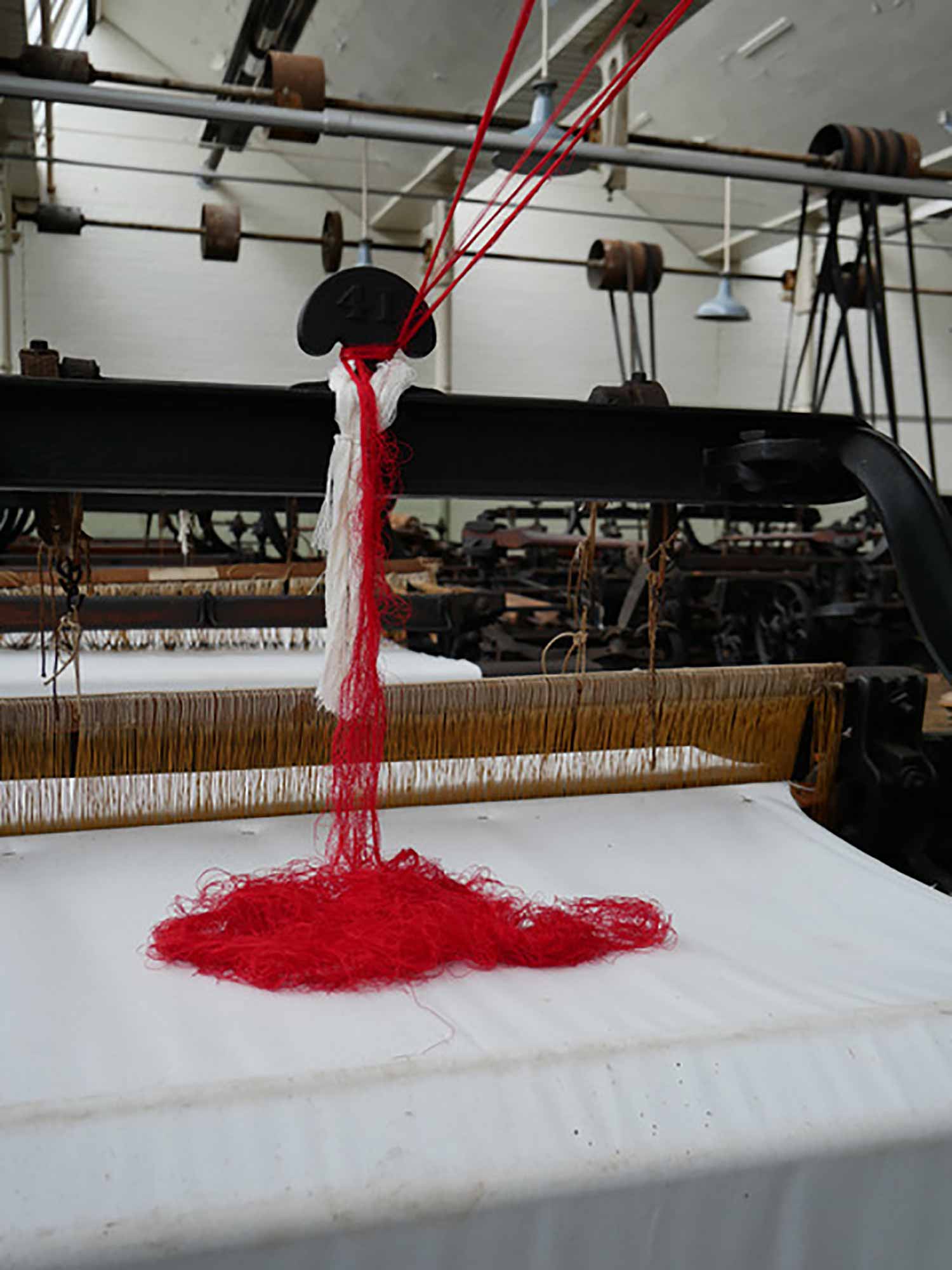
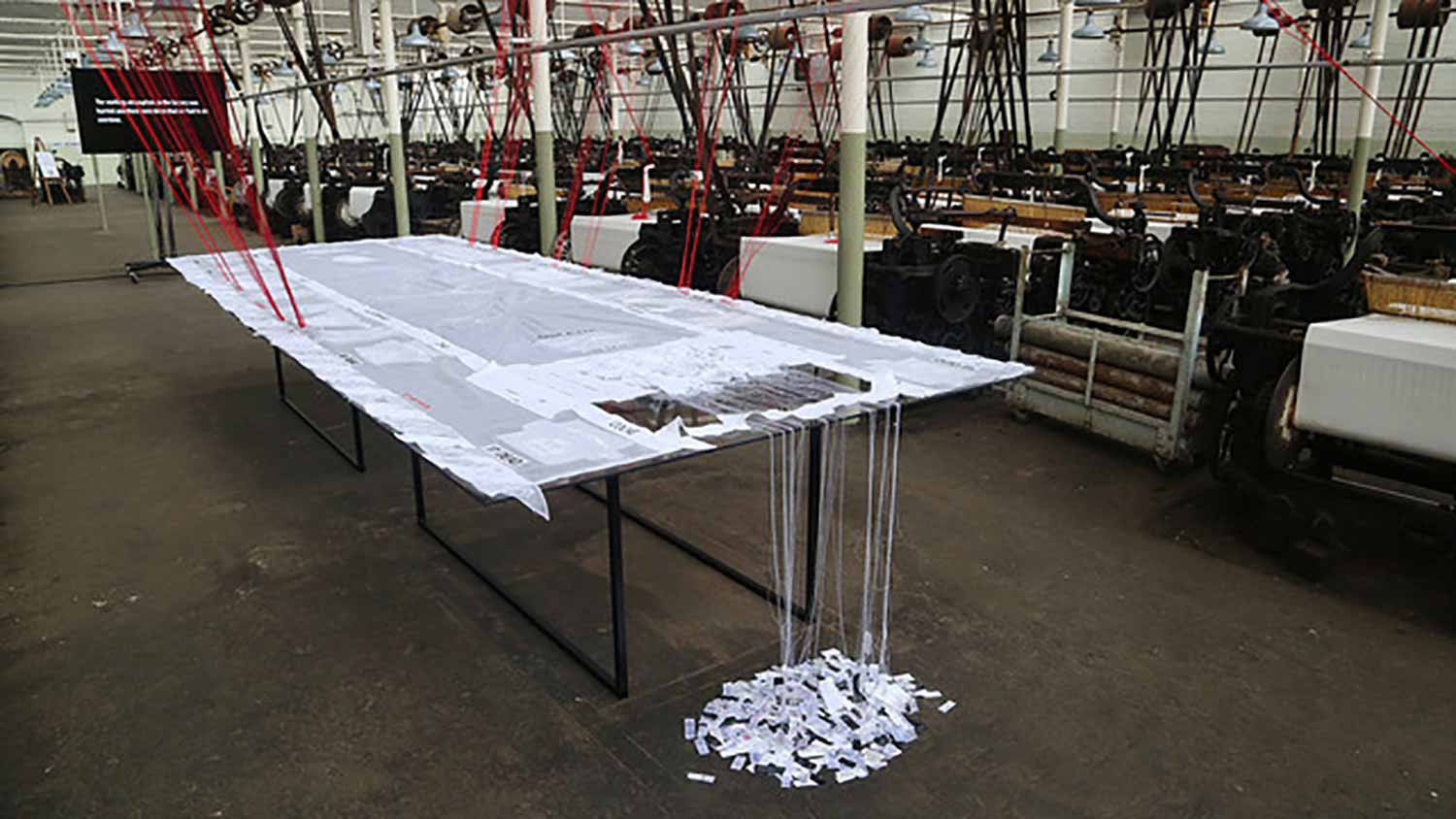
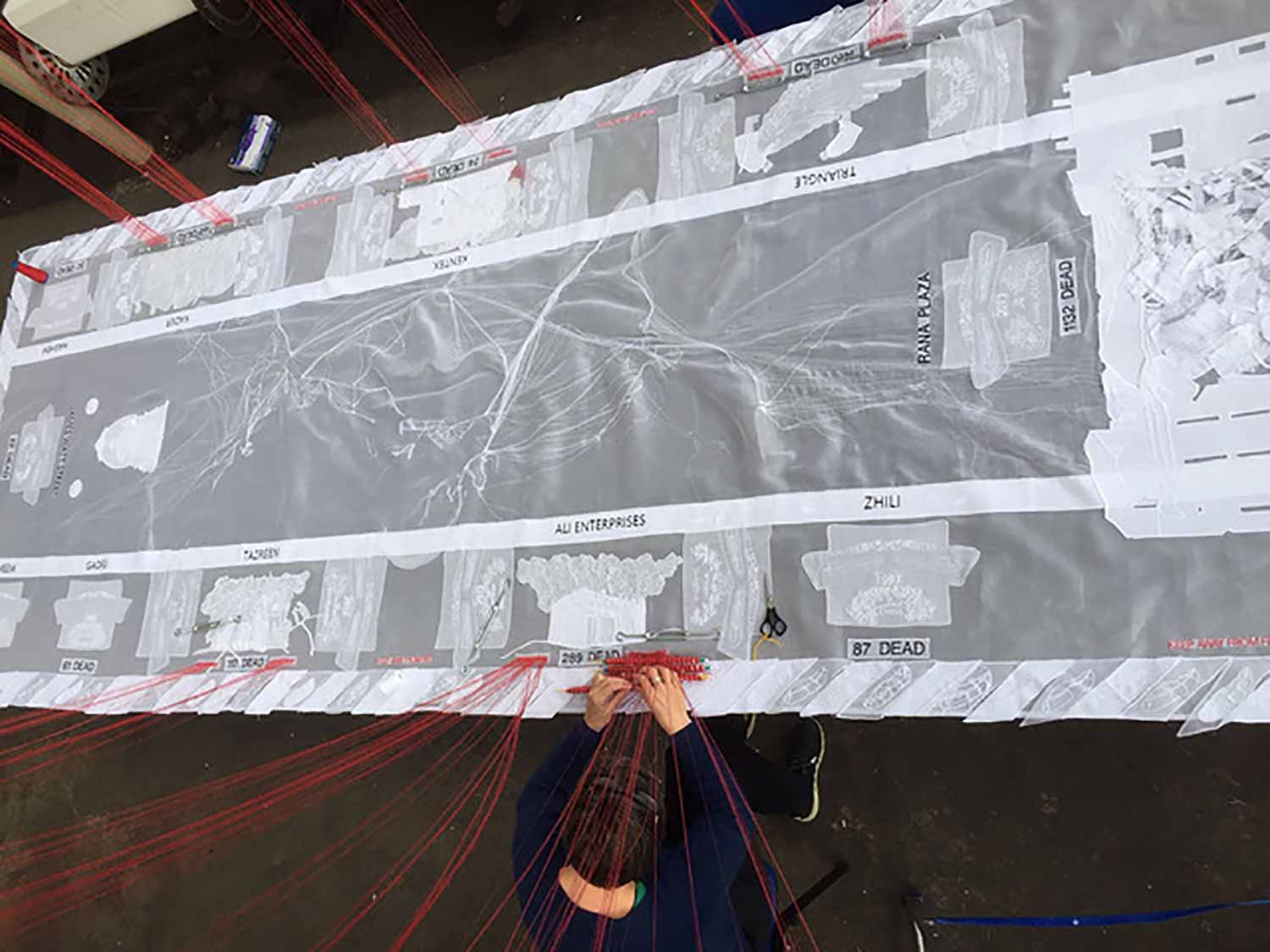
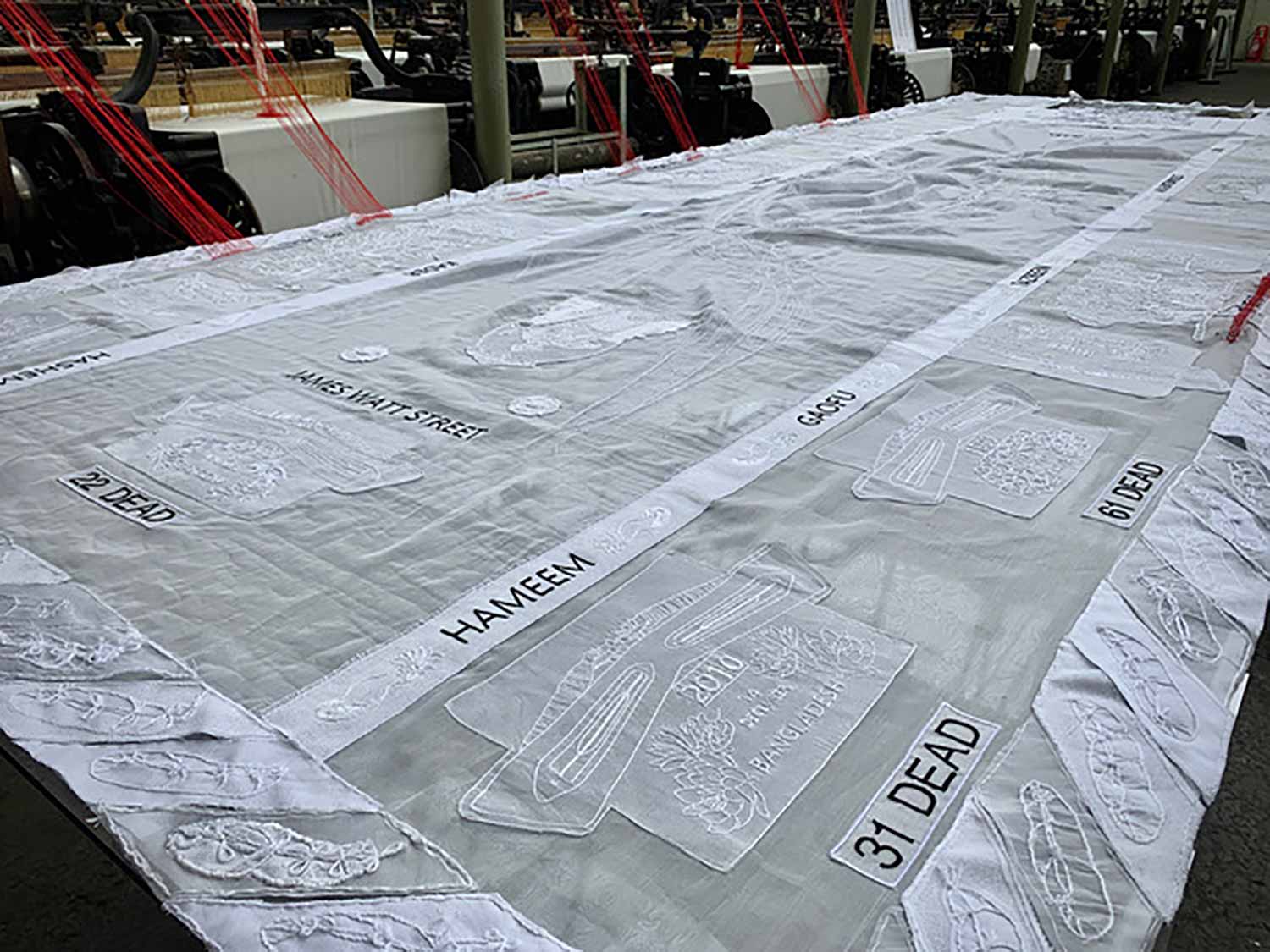
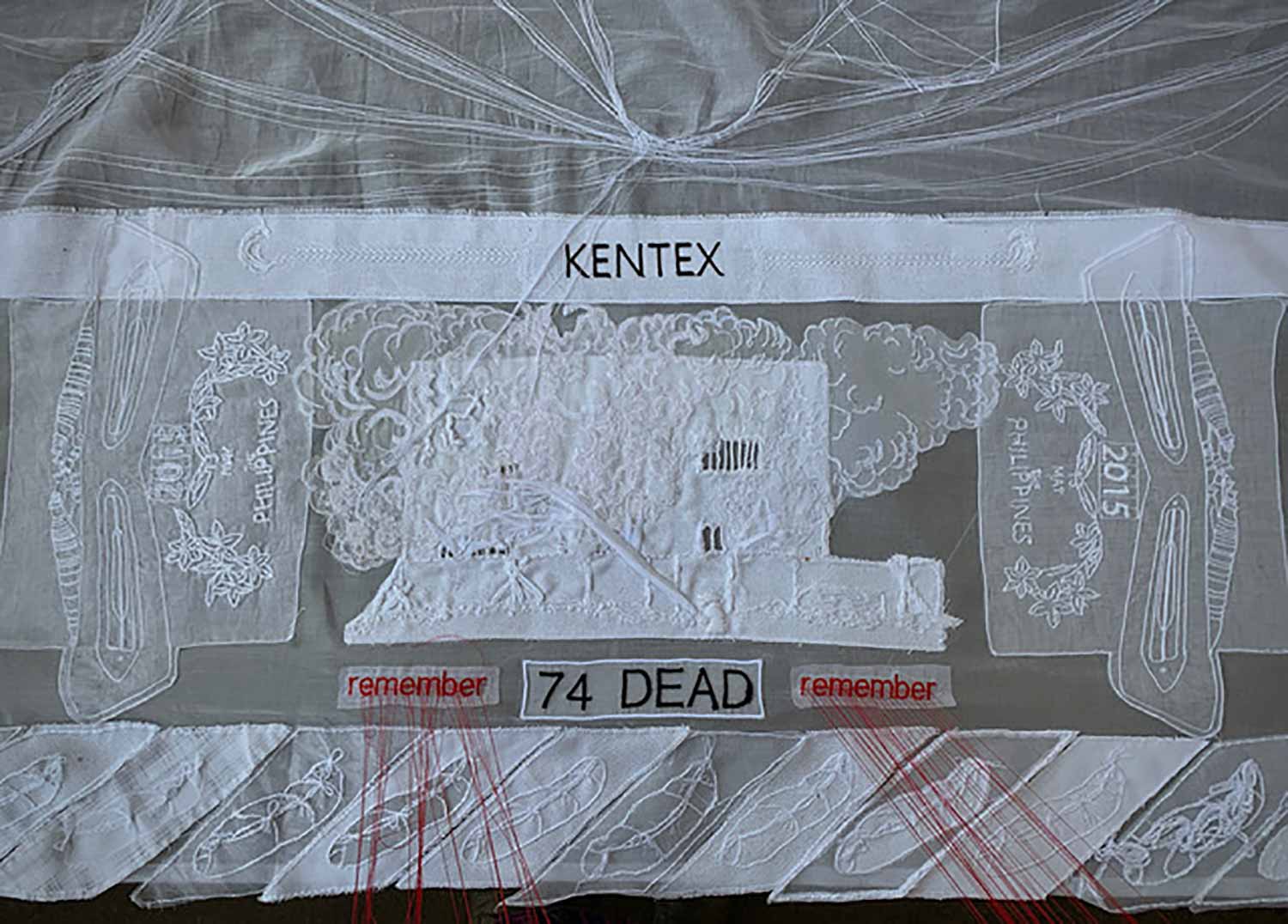
‘Memory, the pattern of sedimented enfoldings of iterative interactivity is written into the fabric of the world. The world holds the memory of all traces or rather the world is its memory… There is no inheritance without a call to responsibility… Entanglements are relations of obligation.’ Karen Barad
(From video recording of Karen Barad’s Roslyn Silver ’27 Science Lecture at Barnard Centre for Research on Women, 2018: ‘Undoing the Future: Troubling Time/s and Ecologies of Nothingness: Re-Turning, Re-Membering, and Facing the Incalculable.’ (link)
Collateral is a site-based, participatory work made specifically for Queen Street Mill in Burnley, Lancashire, commissioned by Super Slow Way for the British Textile Biennial 2021.
The work reimagines an artefact and site of memorialisation to commemorate the hundreds of workers who die because they work in factories and sweatshops that supply the global garment industry.
It consists of a huge hand-embroidered whitework panel, produced collaboratively with local embroiderers and the contributions of over 120 people from across the UK and abroad.
Collateral is a reconfiguring of a machine-made lacework panel commemorating the Battle of Britain and held in the textile collection of Gawthorpe Hall. The iconography of this panel is replaced, reimagining the ‘Battle of Britain’ panel as a global ‘battle’ in which factory workers are its ongoing collateral damage.
The embroidery panel was produced by hand, using traditional and experimental ‘whitework’ embroidery techniques. I worked closely with a small group of skilled amateur embroiderers. We also made an open call to stitchers across the UK to produce a single motif of a body enfolded in fabric and laid out on the ground, taken from a photograph of the aftermath of one of the factory fires. More than 100 people responded to that call and their stitched images form the outer border of the panel.
The whole work is installed in the loom shed at Queen Street Mill. It includes a video and sound work made in collaboration with broken folk duo Lunatraktors (Clair Le Couteur and Carli Jefferson) who came to the mill and improvised overtone singing, body percussion, and clogging in the loom shed. Recordings of this became the basis of a video and soundtrack that I edited together with a text drawn from the testimony of a factory fire survivor, Rasamee Supaem, who I interviewed in Thailand in 2018.
Dr. Brigid McLeer is an Irish artist based in London. She trained in Fine Art at NCAD, Dublin, University of Ulster, Belfast and Slade School of Art, London.
She completed a practice-based PhD in Fine Art from the Royal College of Art in 2020. Her project title was ‘Withholding “us”: images in the space of appearance’. https://researchonline.rca.ac.uk/4427/
She is currently Senior Lecturer in Fine Art at Manchester Metropolitan University.
McLeer is interested in ideas around contingent subjectivity, the public-political and the capacity for images to act. She works in various media/modes including video, durational performance (live and to camera), photography, drawing and writing. Her work has been shown in galleries, public sites, as online projects and on the page.
Recently she has begun to produce more collective and participatory performance events. Her performance lecture The Triumph of Crowds was selected as winner of the Leslie Scalapino Award for Innovative Women Performance Writers in 2016, and was performed by theatre company ‘the relationship’ at Downtown Art, New York in December 2017, directed by Fiona Templeton. The script was published by Litmus Press, New York in 2019.
McLeer has also publishes critical and art writing and her essay ‘Returning in the House of Democracy’ was published in the book The Creative Critic: writing as/about practice edited by Dr. Emily Orley and Katja Hilevaara (Routledge, 2018).
For more details on her art practice and research see brigidmcleer.com
Site and spatial practice have been a continued aspect of my work and over the years I have collaborated with Jane Rendell and other architectural feminist theorists and practitioners on various projects, including being a member of ‘taking place’ feminist art and architecture group 2000–10.
See information about our most recent event remembering our dear friend, architect Julia Dwyer who died in 2019, and my contribution to a walk for Julia, here https://www.brigidmcleer.com/news/taking-place-noticing-the-unnoticed-a-walk-for-julia-dwyer/
Artist Ruth Sergel’s project Chalk memorialising the victims of the Triangle Shirtwaist Factory fire in New York in 1911 and other projects. https://streetpictures.org/. The scale of ambition in Sergel’s work ethically, politically, and socially – not to mention logistically – is astonishing, yet remains – at all times – at a human scale.
Paul Fusco’s RKF Funeral Train photographs from 1968. https://www.magnumphotos.com/newsroom/politics/paul-fusco-rfk-funeral-train/. This series of photographs have enthralled and perplexed me since I first saw them in 1999. Trying to fully understand their deep resonances was the basis of my entire PhD.
Currently I am excited by the different but related ‘entanglements’ of Karen Barad’s ideas of agential realism and quantum justice, and Merlin Sheldrake’s beautiful book on the life of fungi; Entangled Life.
For two film works documenting Collateral, see:
https://britishtextilebiennial.co.uk/programme/brigid-mcleer-collateral/



































































